Recent Articles
Popular Makes
Body Types
2024 Lexus TX 550h+ vs. 2024 Volvo XC90 Recharge Plug-In Hybrid
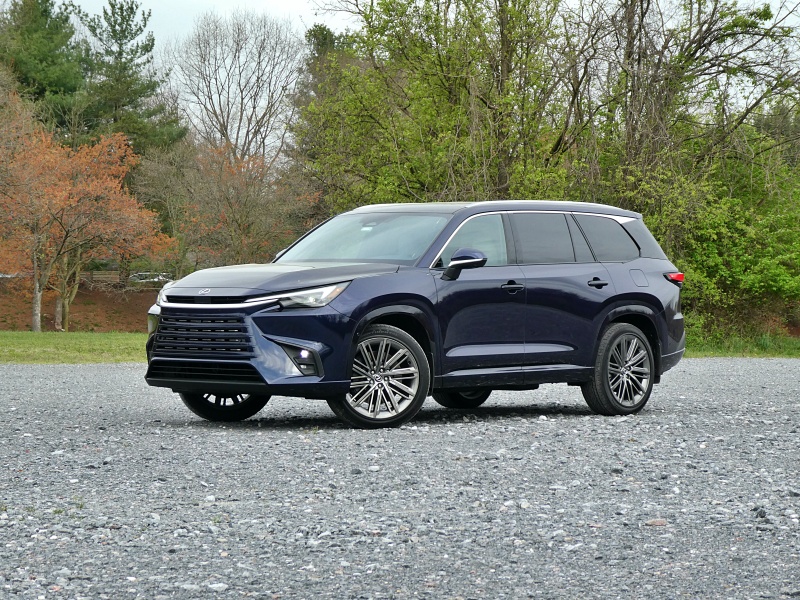
2024 Lexus TX 550h+ ・ Photo by Brady Holt
Lexus created one of the first luxury crossover SUVs and the first one with a gas-electric hybrid powertrain. But it was slow to offer one with true three-row seating and a plug for its hybrid. Now it has solved that with the 2024 Lexus TX 550h+ plug-in hybrid (also known as a PHEV). The TX 550h+ can get charged up using electricity from the grid, enabling a stretch of all-electric operation before the gasoline engine kicks on for greater range or acceleration.
The luxurious, family-friendly TX 550h+ faces an established rival: the 2024 Volvo XC90 Recharge. Volvo has sold an XC90 PHEV since 2015, with repeated improvements to its range during the intervening years. For this review, we tested the TX 550h+ and XC90 Recharge to see which is the better three-row luxury PHEV. Keep reading to see which one we chose and which one sounds like the better fit for you.
Pricing and Features
Spacious luxury SUVs and plug-in hybrids are both expensive propositions, so don’t expect either of these big crossovers to fit a tight budget. The XC90 Recharge starts at $71,900 versus $56,500 for the base gas-only model, and the TX 550h+ starts at $76,700 versus $53,700 for the gas-only TX 350 and $68,000 for the non-plug-in TX 500h hybrid.
The TX 550h+ does come with more standard features than the XC90 Recharge. (Both also have more amenities than their respective gas-only models; part of their price premiums come from extra features, not just the big electric batteries.) Our Volvo test vehicle came to $87,495 versus our $82,784 Lexus. So depending on the features you want, the TX 550h+ might be the better buy. But the XC90 Recharge wins this category in our book for letting you choose a less-expensive way to get a luxury PHEV. And lest there be any confusion, even the base XC90 Recharge is decadently equipped with genuine leather upholstery, a panoramic sunroof, GPS navigation, adaptive cruise control, and a hands-free power liftgate.
Winner: Volvo XC90 Recharge
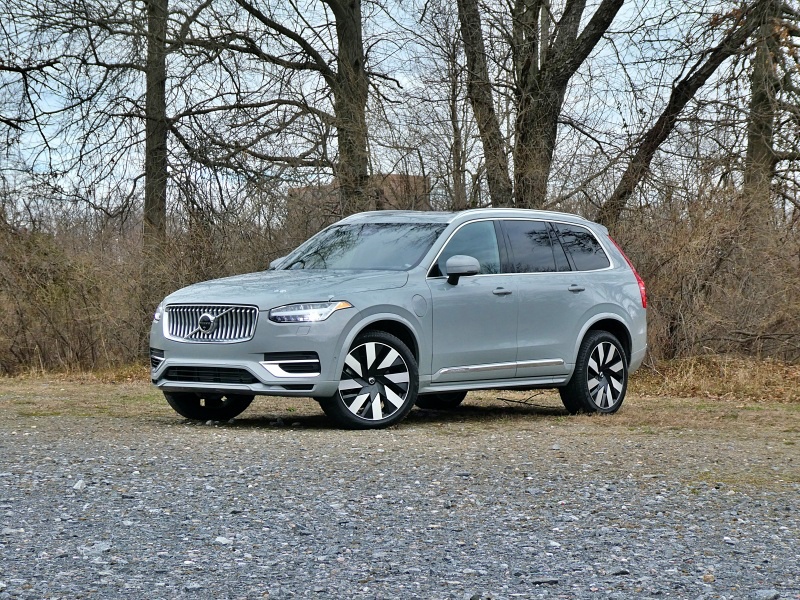
2024 Volvo XC90 Recharge ・ Photo by Brady Holt
Range and Mileage
A big reason to pay up for a plug-in hybrid is the promise of fuel savings – the ability to commute or run errands using electricity and then burn less gas after its range is used up. Both of these PHEVs do well, but the Lexus comes out a bit ahead.
The TX 550h+ pairs a 259-horsepower 3.5-liter V6 engine with two electric motors for a combined output of 404 hp. In EPA testing, it travels up to 33 miles per charge and then averages 29 mpg. The XC90 Recharge, meanwhile, mates a turbocharged 2.0-liter four-cylinder with an electric motor for 455 hp. The EPA rates it at going up to 32 miles using only electricity and then averaging 27 mpg. Our own experience was a little different but mostly in the Lexus’s favor as well. Our average TX 550h+ range was 31 miles per charge, and we averaged 32 mpg after the range was used up. Our XC90 averaged 32 miles per charge but a mere 24 mpg as a regular hybrid, making it much less efficient if you’ll frequently go more than 32 miles per day. One quirk of our TX was that it consistently started a drive estimating 37 miles of charge, only to plummet quickly in the bottom third of its battery capacity. But it’s still the efficiency winner to us overall.
Winner: Lexus TX 550h+
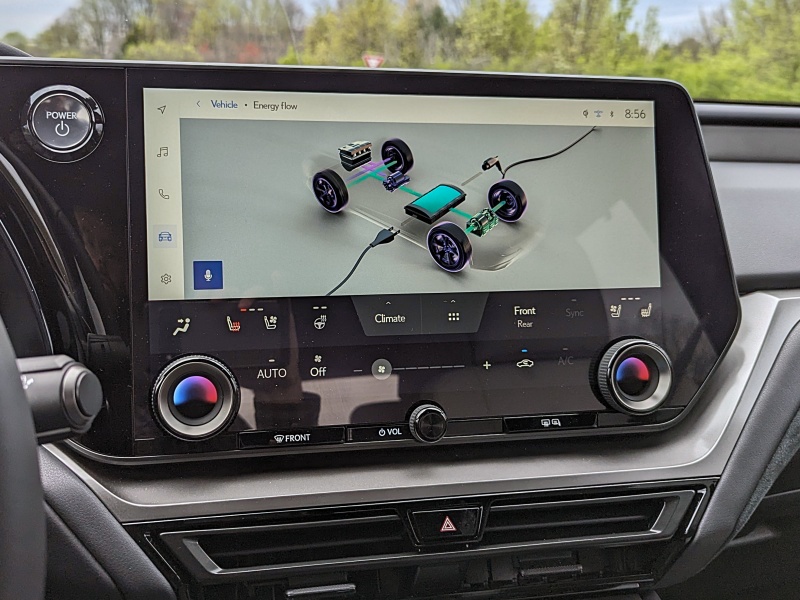
2024 Lexus TX 550h+ ・ Photo by Brady Holt
Driving Experience
Floor the accelerator and the XC90 Recharge whips to 60 mph in 5.0 seconds, while the TX 550h+ – slightly less powerful and slightly heavier than the Volvo – needs 5.9 seconds. Still, we preferred driving the Lexus overall.
The TX’s extra weight and cushier suspension help it glide smoothly down the road, while the XC90 feels slightly stiffer over bumps. And even if the Lexus isn’t quite as quick, its V6 engine sounds better than the Volvo’s four-cylinder, including at idle where the XC90 had some extra vibration. The XC90 might have a bit more handling poise in addition to its extra speed. But not only are those advantages fairly slight, we also consider them less relevant to these SUVs than comfort and refinement. (For sportier handling in a three-row opulently finished PHEV, we’d look at the Mazda CX-90.) Both the XC90 and TX are comfortable and quiet, but the Lexus is even more so without giving up much handling poise.
Winner: Lexus TX 550h+
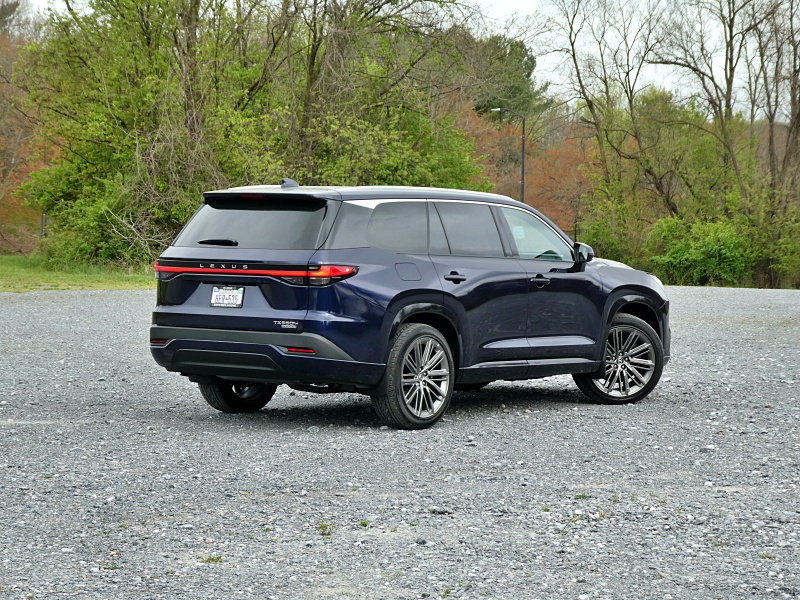
2024 Lexus TX 550h+ ・ Photo by Brady Holt
Exterior Design
The Volvo XC90 has changed little since its debut as a 2016 model, but it still looks modern, fresh, and beautiful – as the model that inspired the company’s design scheme in the years since. It’s classy without being ostentatious, never overly flashy but never dull. It includes Volvo’s slim “Thor’s hammer” headlights, its taillamps that stretch vertically alongside the generously sized rear windshield, and the proudly boxy shape that doesn’t pretend this SUV is a sports car. The Recharge hybrid looks the same as the standard XC90 except for a charging port located on its driver’s-side front fender.
The Lexus TX, all new for this year, is another gracefully conservative SUV. It’s neither dipped in chrome nor covered in sharp creases. It doesn’t look angry or flashy. Instead, it’s a gently rounded version of the even boxier-looking Toyota Grand Highlander. But it also retains signature Lexus cues that keep it upscale, including standard 22-inch wheels, a slim rear lightbar, and a subtle hint of Lexus’s signature “spindle” grille. We also like the way the TX’s headlights spear themselves across the top of the grille. It’s perhaps less distinctive than the Volvo, but we’ll call this category a tie as a matter of individual preference.
Winner: Tie
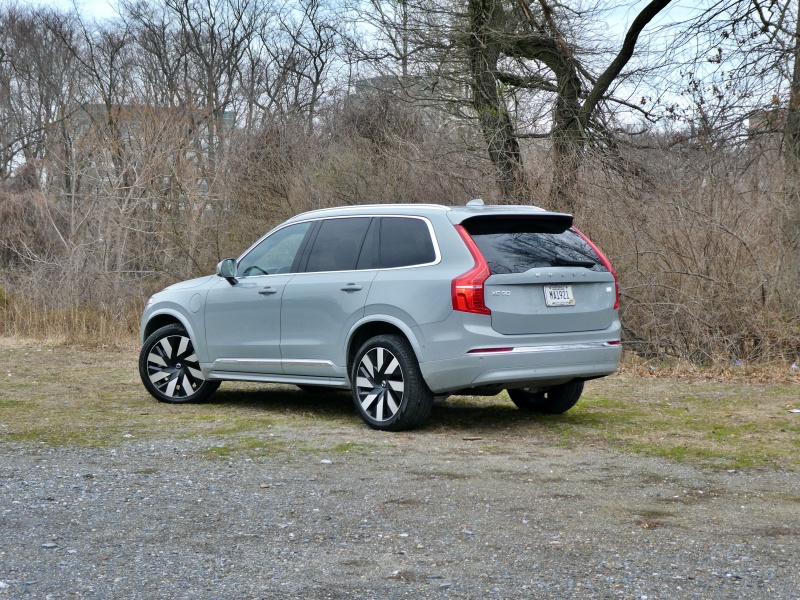
2024 Volvo XC90 Recharge ・ Photo by Brady Holt
Interior Design
The TX’s interior is eight years newer than the XC90’s, and that shows in the Lexus’s big 14-inch touchscreen versus the Volvo’s modest 9-inch unit. And while the XC90’s software is new under the skin with a Google-based system, it still takes too many steps and too much concentration to perform basic functions. What’s more, the XC90 has small cupholders and modest cabin storage.
However, after all these years, the XC90 interior is still more of a knockout to us than the TX’s. It has richer materials and, subjectively, a more beautiful design. It has a graceful elegance while the Lexus, while well-built, is merely unassuming and inoffensive. Plus, even the simpler-looking Lexus’s controls aren’t perfect; it doesn’t make great use of its mega-size screen, and the steering-wheel controls’ multifunction buttons are easy to mix up. Though both cabins have their ups and downs, we’ll call this category an overall tie between the swankier Volvo and the generally more functional Lexus.
Winner: Tie
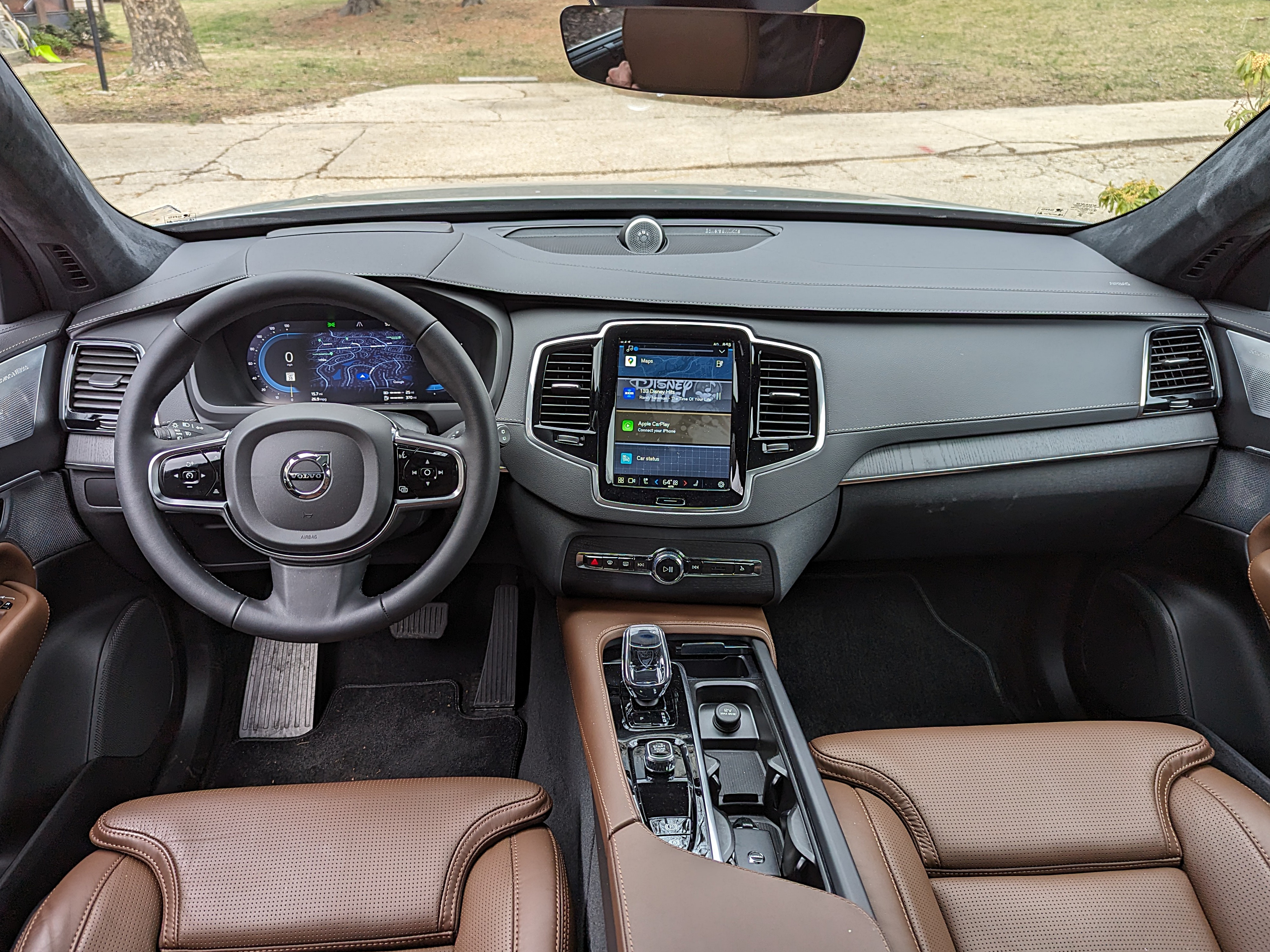
2024 Volvo XC90 Recharge ・ Photo by Brady Holt
Passenger Accommodations
The TX is half a size larger than the XC90, and you’ll feel that when it’s time to load the SUVs up with passengers.
The XC90 is intelligently configured to make the most of its smaller footprint. If you need to, you can slide the front and second-row seats forward a bit to let everyone fit – though not with much extra room. The XC90 Recharge is sold in a choice of seven-passenger seating like our test vehicle or six-passenger seating that swaps a second-row bench seat for two captain’s chairs. The TX isn’t quite minivan-spacious, but there’s more room to stretch out in all the rows. Still, we’ll call this category an overall tie because every TX 550h+ seats just six passengers. Unlike the gas-only TX, the plug-in hybrid is sold only with second-row captain’s chairs with no option for a three-person bench seat.
Winner: Tie
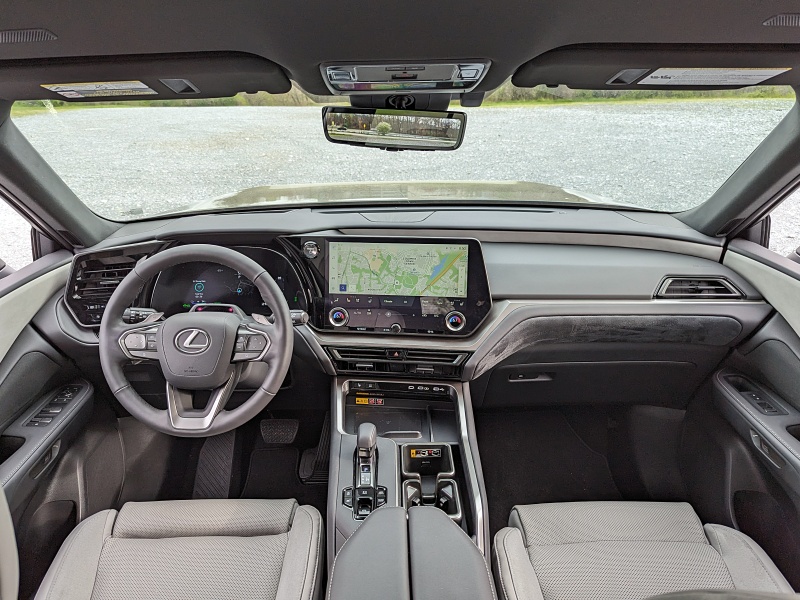
2024 Lexus TX 550h+ ・ Photo by Brady Holt
Cargo and Utility
The Lexus’s extra size also helps fit more cargo. The TX fits 20.2 cubic feet behind its third-row seat, 57.4 cubic feet behind the second row, and 97.0 cubic feet with both rows folded down. The XC90 is also decently roomy for a mid-size luxury SUV, but especially with all three rows in place, you’ll feel more pinched. It has 15.8 cubic feet behind the third row, 41.8 cubic feet behind the second row, and 85.7 cubic feet behind the front seats. Both SUVs can tow up to 5,000 pounds (though a trailer would make short work of their all-electric range).
The Volvo does have one advantage: Its seats fold more easily than the Lexus’s. The TX’s power-folding third row freezes partway down and beeps continuously if the second row is too far backward or reclined, blocking its path. And the second-row seats require a clunky and unintuitive manual procedure. Still, the Lexus has much more total space and takes the win.
Winner: Lexus TX 550h+
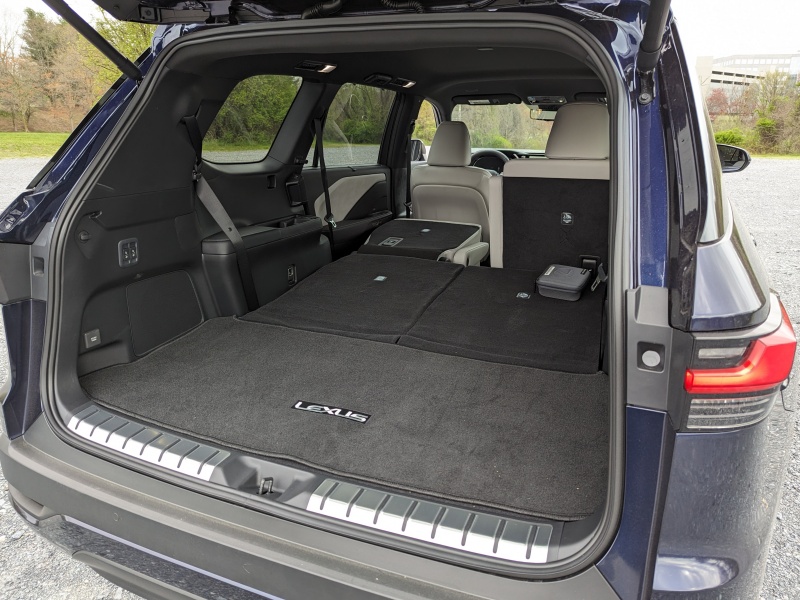
2024 Lexus TX 550h+ ・ Photo by Brady Holt
Safety
Volvo has a strong reputation for safety, and while it often has mere parity with its peers these days, the XC90 does beat out the newer TX’s crash-test performance.
The XC90 earned a Top Safety Pick designation from the Insurance Institute for Highway Safety and five out of five stars from the National Highway Traffic Safety Administration. As of this writing, NHTSA hasn’t yet tested the TX, and it missed a Top Safety Pick mark by scoring merely Acceptable in the IIHS’s small-overlap frontal crash tests. That’s the second-highest score, but it’s unusual for any brand-new vehicle – much less an expensive family vehicle – to get anything but the highest Good in this test.
Winner: Volvo XC90 Recharge
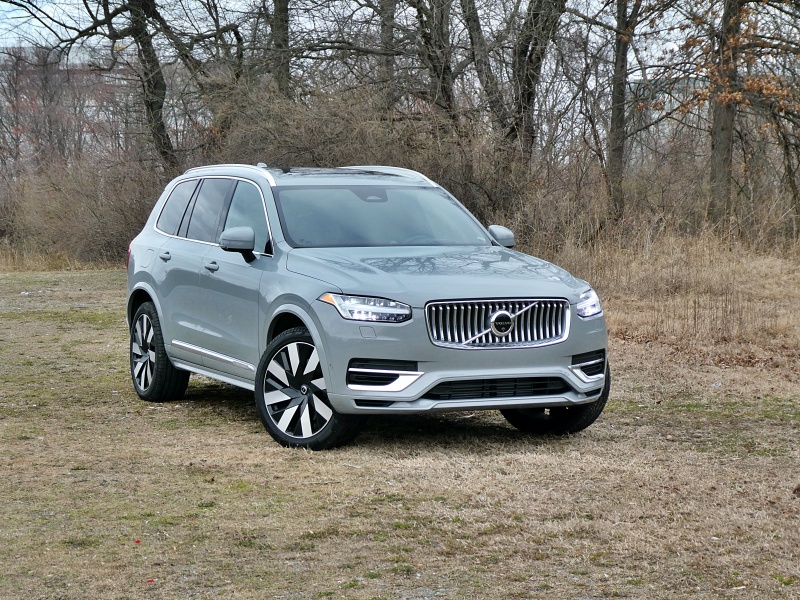
2024 Volvo XC90 Recharge ・ Photo by Brady Holt
Final Thoughts
Both the TX 550h+ and the XC90 Recharge are excellent vehicles. They’re roomy, attractive three-row SUVs that drive well, accelerate faster than their gas-only counterparts, and can avoid burning any gasoline on a 30-mile drive.
Both also have their drawbacks. The Volvo’s dashboard controls and cabin storage could stand to improve. It has less cargo space than the Lexus, and especially in our hands, it’s less economical after its range is used up. The TX 550h+, meanwhile, has erratic range estimates; it’s more of a hassle to fold down its seats; you can’t get a seven-passenger model; some of its own controls and infotainment functions could work better; and its crash-test performance disappoints. Overall, we’d pay the slight price premium for the Lexus’s greater space, comfort, and efficiency over the smaller, slightly safer Volvo, and more beautiful Volvo – it’s our chosen winner. But you’ll see which vehicle’s strengths attract you more, and which one's foibles bug you less.
Winner: Lexus TX 550h+
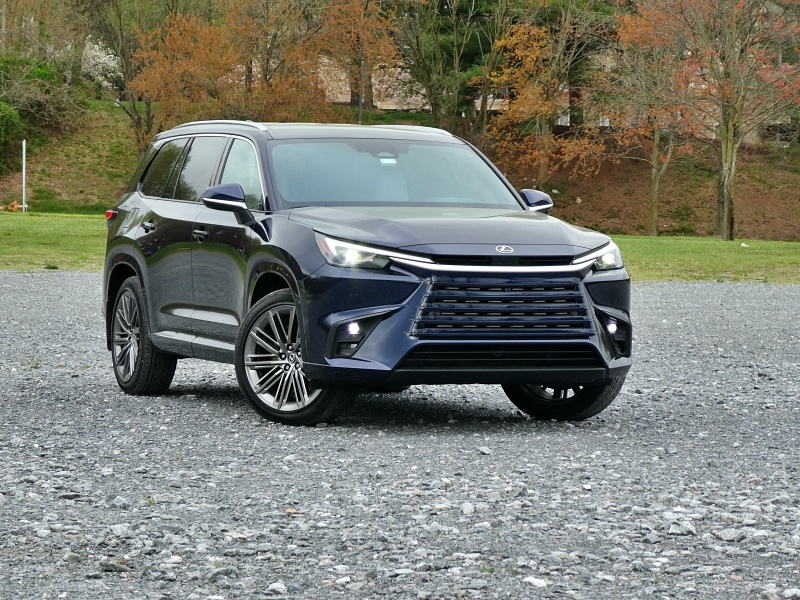
2024 Lexus TX 550h+ ・ Photo by Brady Holt